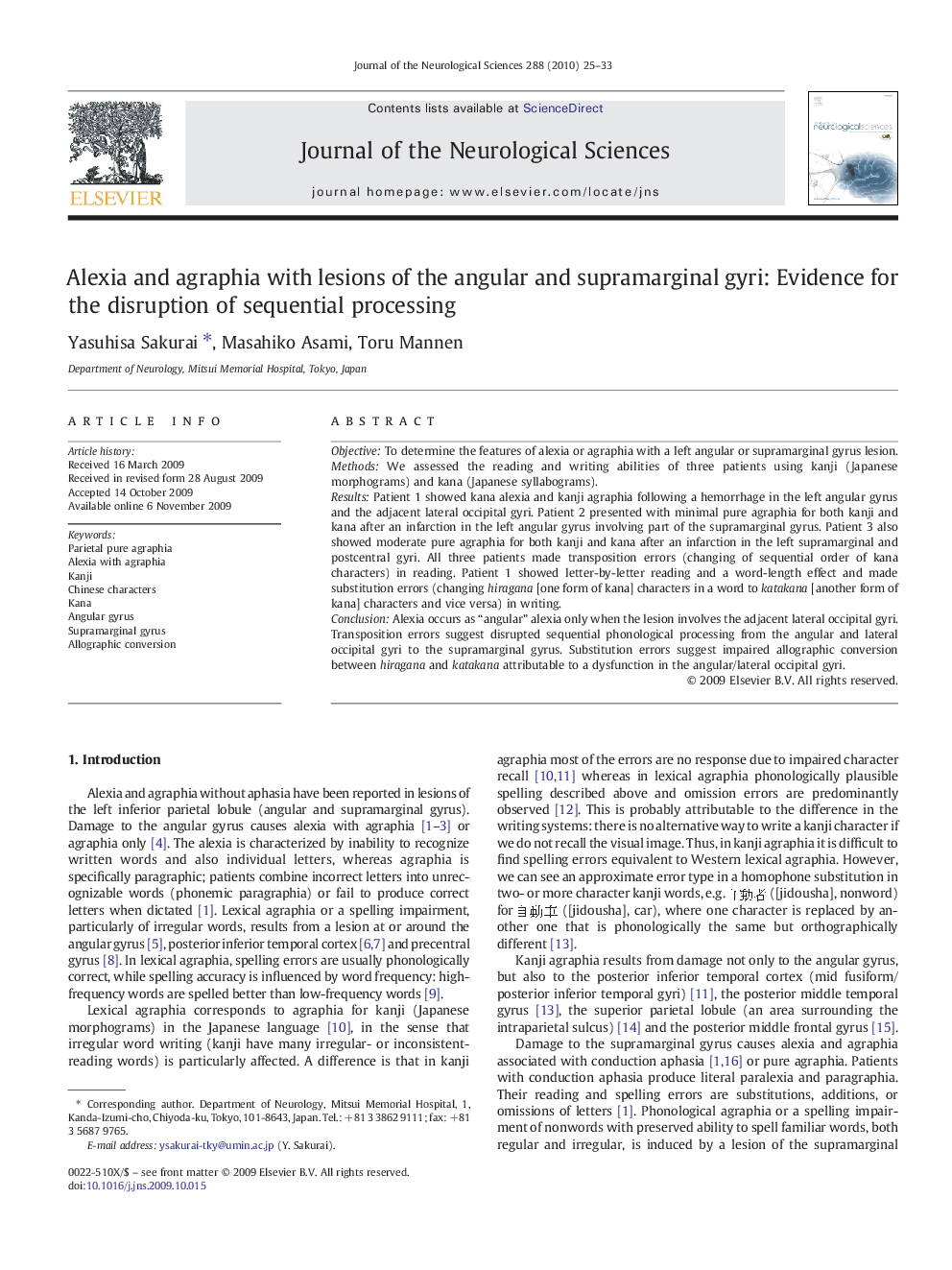| Article ID | Journal | Published Year | Pages | File Type |
|---|---|---|---|---|
| 1914750 | Journal of the Neurological Sciences | 2010 | 9 Pages |
ObjectiveTo determine the features of alexia or agraphia with a left angular or supramarginal gyrus lesion.MethodsWe assessed the reading and writing abilities of three patients using kanji (Japanese morphograms) and kana (Japanese syllabograms).ResultsPatient 1 showed kana alexia and kanji agraphia following a hemorrhage in the left angular gyrus and the adjacent lateral occipital gyri. Patient 2 presented with minimal pure agraphia for both kanji and kana after an infarction in the left angular gyrus involving part of the supramarginal gyrus. Patient 3 also showed moderate pure agraphia for both kanji and kana after an infarction in the left supramarginal and postcentral gyri. All three patients made transposition errors (changing of sequential order of kana characters) in reading. Patient 1 showed letter-by-letter reading and a word-length effect and made substitution errors (changing hiragana [one form of kana] characters in a word to katakana [another form of kana] characters and vice versa) in writing.ConclusionAlexia occurs as “angular” alexia only when the lesion involves the adjacent lateral occipital gyri. Transposition errors suggest disrupted sequential phonological processing from the angular and lateral occipital gyri to the supramarginal gyrus. Substitution errors suggest impaired allographic conversion between hiragana and katakana attributable to a dysfunction in the angular/lateral occipital gyri.
